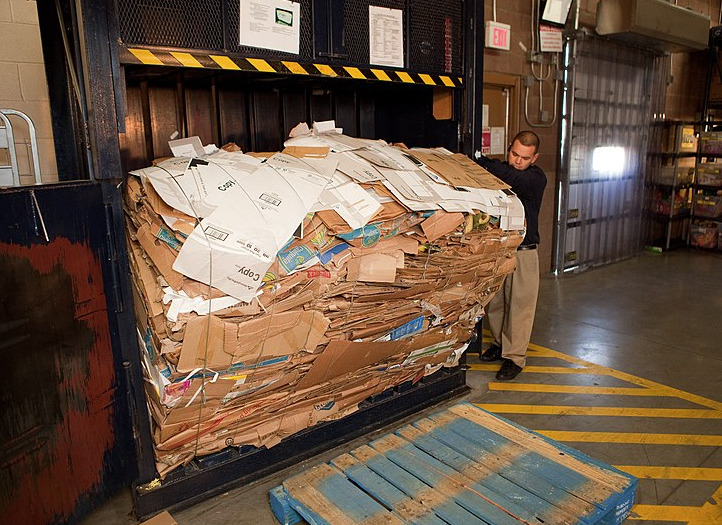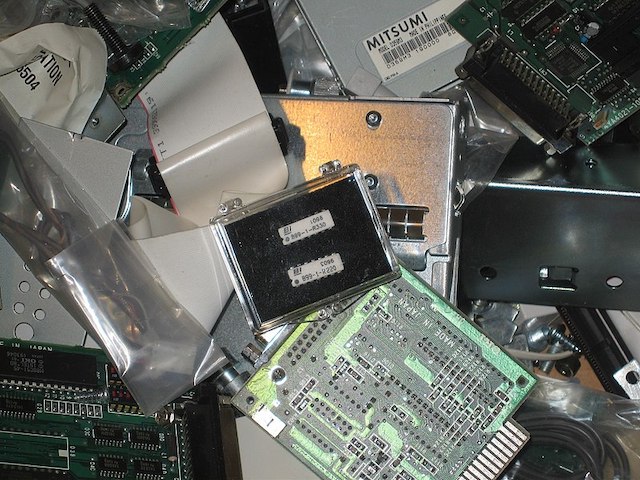About four years ago, in an effort to renovate my perennial dumb image, I bought a middle range smart phone. My image has improved marginally since then, but the phone battery is now giving way: it never charges more than 50%, and so I have to charge it at least three times a day, even though I’m not a heavy user. I have been trying to replace the battery but no one can help, including the manufacturer of the phone. I have been variously advised by friends that it cannot be done, that original batteries are just not available, that even if I were to find a battery it would cost as much as the phone, and that I should simply chuck away the phone, save my data and buy a new phone.
Welcome to the Throw-away economy (TAE) , a major reason why the planet is warming up faster than the audience at a strip-tease joint in the middle of summer. A TAE refers to the prevalence of consumer goods ( “non-durables” in marketing parlance) which only last for a short period of time. When they stop working we throw them away and replace them with new goods. Included in this genre are nearly all electronic goods, computers, phones, watches, music systems, medical devices, TVs, modems, etc. Also included are packing materials, gift wrappings, thermocol, single use plastic items.
Globally, 50 million tonnes of e-waste is produced every year, and not even 10% of this is recycled or recovered. The USA discards 150 million smart phones every year, the global figure would be mind boggling considering that there are more than 8 billion phone connections. A recent survey shows that in the West a phone is replaced with a new model every 2 years. This is the TAE run amok and is a recipe for environmental disaster.
Most of the items mentioned above are not essential for either our health or existence, as anyone who has received an Amazon parcel can testify- layers and layers of bubble wrap and paper packing inside a cardboard carton filled with more plastic ticker tape. And this is not small change: Amazon makes 7 billion deliveries every year and uses 600 million pounds of plastic, all of which is going into landfills, forests and oceans and will be around for the next 200 hundred years, even after homo sapiens has killed itself with its own waste, as Chief Seattle had prophesied almost 250 years ago. We can live just as well without this half a billion pounds of plastic.
With the whole world going digital and being wired electronically, the TAE is producing millions of tonnes of electronic waste every year which is equally hazardous to human health and the environment. Most countries have no clue as to how to dispose of them safely which is why major producers of this waste are dumping them in under-developed countries of Asia and the Pacific. And as global consumption continues to increase so does the TAE waste, posing a major threat to the natural environment, wildlife and even humans.
The TAE was not inevitable, as people of my generation can vouch for: we drank milk from bottles not plastic pouches, we repaired our old cars, radios, gramophones and watches repeatedly till they lasted for a thousand years, our ink pens lasted even longer, we didn’t throw away our shoes when they got worn out- we had them resoled. The throw-away economy arrived sometime in the 1970s when corporates got greedy for quicker profits, when technology was allowed to run rampant over the environment, when we as a race became too lazy and governments continued to be about five decades behind the innovations that were taking place.

Today, “built in obsolescence” is part of the business model of every manufacturer: the product is deliberately designed to last for the minimum number of years that the market can sustain without revolting, and then has to be thrown away and replaced ( the reason why you cannot get a new battery for your phone). Part of this devilish strategy is to make it impossible for the product to be repaired. There are various devious ways in which this is done: impose “do not touch” warranty conditions, deny product specs or information to third party repair shops, non-supply of spare parts. The consumer is ultimately left with no option but to junk his old item and buy a new one.
There is also the “expiry date” racket in the booming pharmaceutical and nutraceutical industries. Every medicine or supplement comes with an expiry date which is about a year or two down the line. I can’t even remember how many bushels of the bloody stuff I’ve thrown away, petrified of the ill effects of consuming an expired medication. But the whole thing is a scam, I now discover, just another aspect of the TAE. The US military, saddled with a billion dollars of “expired” medicines in its stocks, commissioned a study to find out whether these medicines were actually unsafe for consumption. The study, carried out by the FDA( Food and Drugs Authority) tested more than 100 drugs and found that 90% of them retained their potency and effectiveness, without any harmful effects, years after their expiry dates, some even after 15 years! ( The Wall Street Journal, March 29, 2000). This was true across the board, with the exception of anti-biotics and perhaps insulin. Most drugs experts concur with these findings, and it is clear that expiry dates have more to do with marketing rather than with science. The premise is simple: the customer has to be persuaded to throw away the old stuff so that he can buy more of the new stuff. It’s the same with cars, with a “new” model being launched every second year; my father drove the same model of the Landmaster and Ambassador for forty years, though he did change the vehicle every 7-8 years. But he changed cars because of the miles ramped up on the milometer. not because he was compelled to keep up with the Junejas whenever a “new model” was unleashed on an unsuspecting public.

Have you wondered why each type of smartphone has its own charger which is not interchangeable with the chargers of other phones? So that when you change your phone( upgrade?) you have to buy a new charger too and throw the old one away! Another corporate strategem of the Throw Away Economy. The European Union has now passed a law that makes it mandatory for the digital phone industry to have a common charger for all phone models. This one simple law alone will reduce electronic waste by 10000 tonnes and save the consumer 250 million Euros every year. Similar unethical, avaricious, coercive and environmentally damaging corporate policies are being replicated across industries.
But their days are numbered, as consumer and environmental activists across the globe mount pressure on governments and corporates to reform the TAE. New York state has just passed a ground breaking FAIR REPAIR ACT, 2022 that compels all digital/ electronics manufacturers to make public/supply repair information, tools, parts, software for their product to third party repair shops ( and not just their own company service centers). This will enable users to get their gadgets repaired at reasonable prices and not compelled to buy new replacements. The EU is considering a similar legislation; an Indian govt. spokesperson has announced that India is also working on a similar law, after banning single use plastic products just this month.
The Throw Away Economy model may be enriching the fat cats but it is disastrous for the environment; in the long run it also does not make economic sense because it mis-allocates resources for unnecessary consumption. There is a pressing need to move to a “circular economy” business model of reuse, repair and recycle. We can no longer afford to throw away anything. If industry and Big Capital do not make the change on their own, then governments have to compel them through a mix of incentives, taxes and penal action. There are four steps governments need to take to move in this direction:
- BANS ( all non-essential items which can be replaced with environment friendly substitutes; the ban on single use plastic is one such measure.]
- TAXES ( on items whose use should be discouraged/ minimised).
- INCENTIVISE (to encourage industry to reuse/ repair. For example, a company in Sweden has invented a process by which printed paper can be used again without pulping it. The printed sheets are passed through a laser machine which erases the printing on the paper, and the sheet can be used again for printing/ typing. This can be done ten times. It can potentially save millions of trees from being axed every year. A shoe company is making materials for its shoes from sea-weed, doing away with the need for rubber or PVC. Governments need to encourage such innovation through fiscal instruments.)
- EXTENSION OF PRODUCER/ MANUFACTURER RESPONSIBILITY. (The responsibility of the producer should not end with the sale of its product, but should extend also to its service, repair and disposal. For example, battery manufacturers should be made responsible for collection, reuse or safe disposal of dead batteries, Amazon and Flipkart should be required to pick up and dispose of their wrapping material and cartons, Coca Cola or Amul or Mother Dairy should devise a system whereby their bottles, cartons and pouches are properly collected and disposed off. For far too long these responsibilities of society and corporates have been discharged by the humble and unsung rag-pickers and kabariwallahs- it’s high time the money-bags stepped up to the plate and did the right thing by their customers and the planet.
The Throw Away Economy is not sustainable, either environmentally or economically. Citizens need to be sensitised to the effects of mindless and needless consumption, corporates have to place the interests and good of the planet above their profit margins, and governments must step in with legislation to ensure that all this happens. This is beginning to happen but the process needs to be speeded up as we are running out of time and natural resources.
So that the next time your phone battery drains out, you can, hopefully, buy another battery for a couple of thousand rupees instead of having to buy a whole new phone for twenty times that. And being forced to chuck another 500 gms of e-waste as your modest contribution to the destruction of Mother Earth.
| The author retired from the IAS in December 2010. A keen environmentalist and trekker he has published a book on high altitude trekking in the Himachal Himalayas: THE TRAILS LESS TRAVELLED.
His second book- SPECTRE OF CHOOR DHAR is a collection of short stories based in Himachal and was published in July 2019. His third book was released in August 2020: POLYTICKS, DEMOCKRAZY AND MUMBO JUMBO is a compilation of satirical and humorous articles on the state of our nation. His fourth book was published on 6th July 2021. Titled INDIA: THE WASTED YEARS , the book is a chronicle of missed opportunities in the last nine years. Shukla’s fifth book – THE DEPUTY COMMISSIONER’S DOG AND OTHER COLLEAGUES- was released on 12th September 2023. It portrays the lighter side of life in the IAS and in Himachal. He writes for various publications and websites on the environment, governance and social issues. He divides his time between Delhi and his cottage in a small village above Shimla. He blogs at http://avayshukla.blogspot.in/ |


